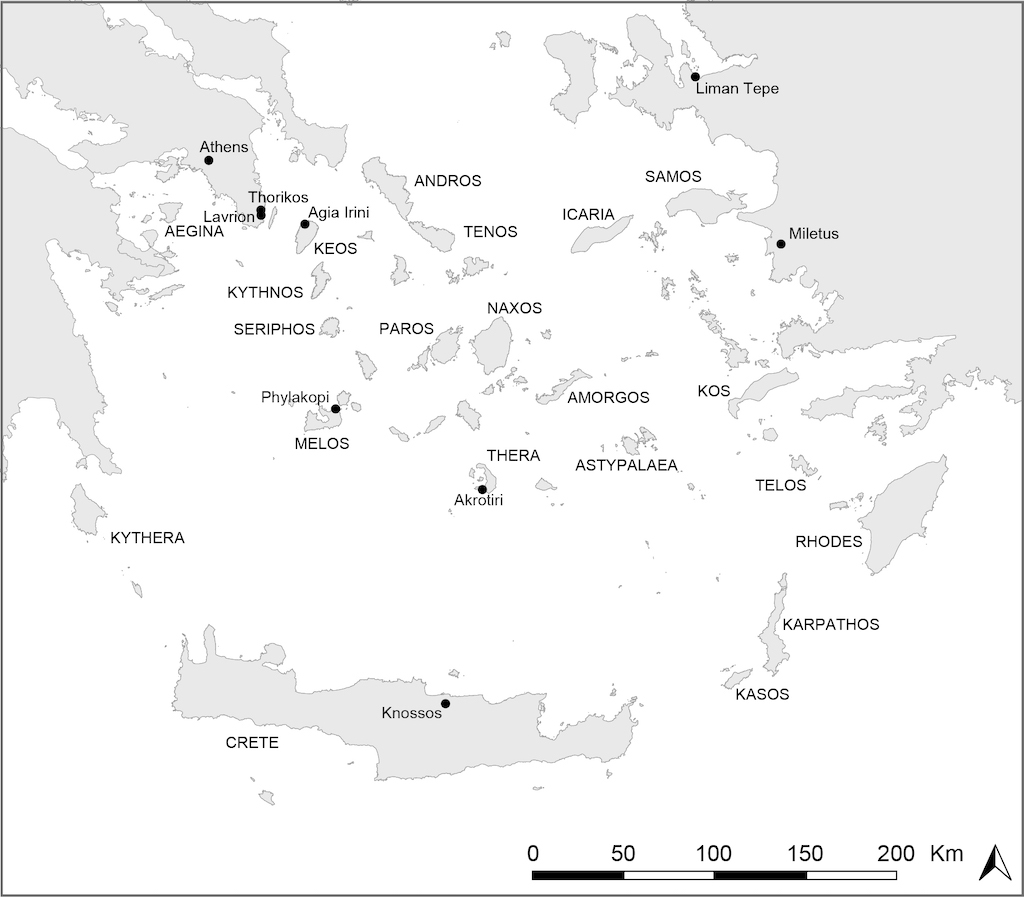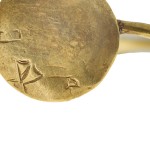The Western String in the Late MBA and LBA I-II: Populations and Account Balances
Donald W. Jones
Donald W. Jones, with responses by Natalie Abell, Luca Girella and Peter Pavúk, Alex Knodell, Irene Nikolakopoulou, Todd Whitelaw, and a reply by Donald W. Jones
Three Aegean islands – Melos, Thera, and Kea – between Crete and the eastern mainland of Greece have been singled out as composing the Western String principal trade route during the Bronze Age (Fig. 1.). Each has a single town and at least the remains of a good harbor, and the towns have the archaeological evidence of out-of-the-ordinary wealth: fortification walls, at least one monumental building, sophisticated fresco wall paintings in some of the buildings, and high-value imports. My question is: How did such small islands with so few productive resources and populations, get so rich? My answer is that they charged for port services, earning something like monopoly profits off their natural harbor facilities. I test this hypothesis with the interruption of commercial shipping following the destruction of the middle island – Thera – by a volcanic explosion around 1630 BCE. As the shipping through the remaining two islands tapered off, partly due to reduced demand from Crete and partly due to emergence of new, work-around shipping routes, so did those two islands’ ability to sustain the monumentality of architectural structures as earthquakes required repairs that increasingly came out of savings and shipping income dwindled. Eventually the towns were abandoned.
Responses
Assessing Insular Economic Strategies: Some Responses to D.W. Jones’ Model of Middle and Late Bronze Age Cycladic Prosperity, by Natalie Abell
The Western String in the Late MBA and LBA I-II: A Reaction to
Donald Jones’s Article from a Wider Perspective, by Luca Girella and Peter Pavúk
The Western String in Context: Local Landscapes and Aegean Networks, by Alex Knodell
More than Ports of Call: Remarks on Middle and Late Bronze Age
Island Economies in Response to D.W. Jones’ Model, by Irene Nikolakopoulou,
A Response to Donald W. Jones, The Western String in the Late MBA
and LBA I-II: Populations and Account Balances, by Todd Whitelaw
A Reply, by Donald W. Jones



